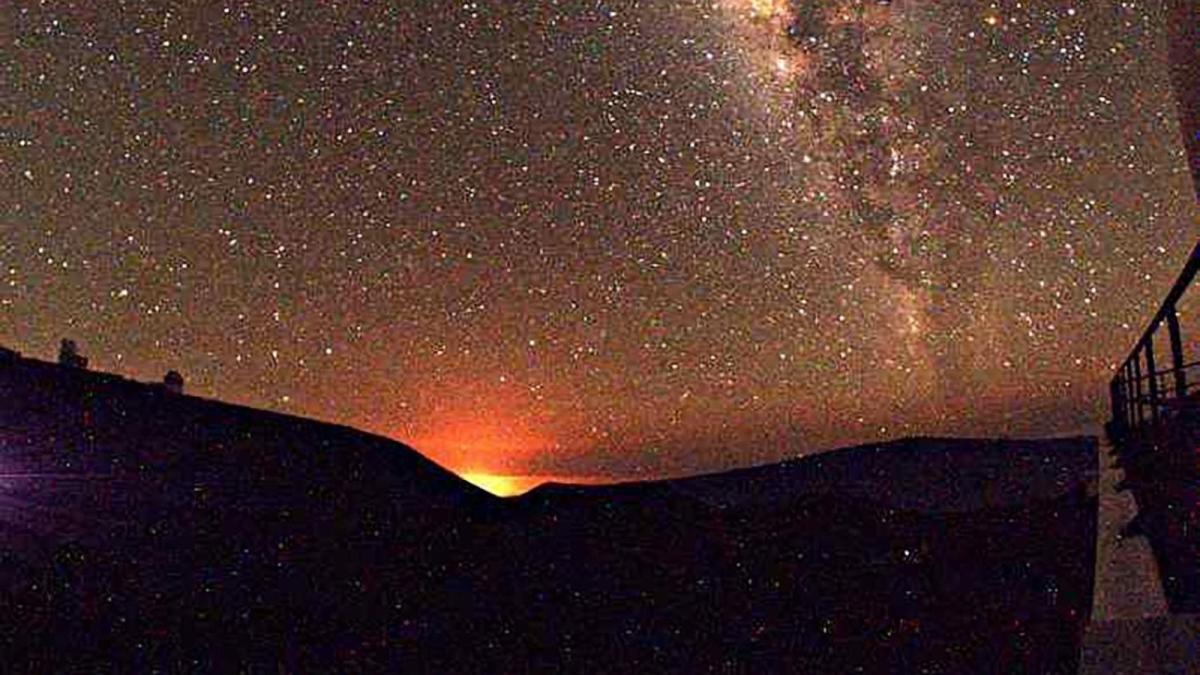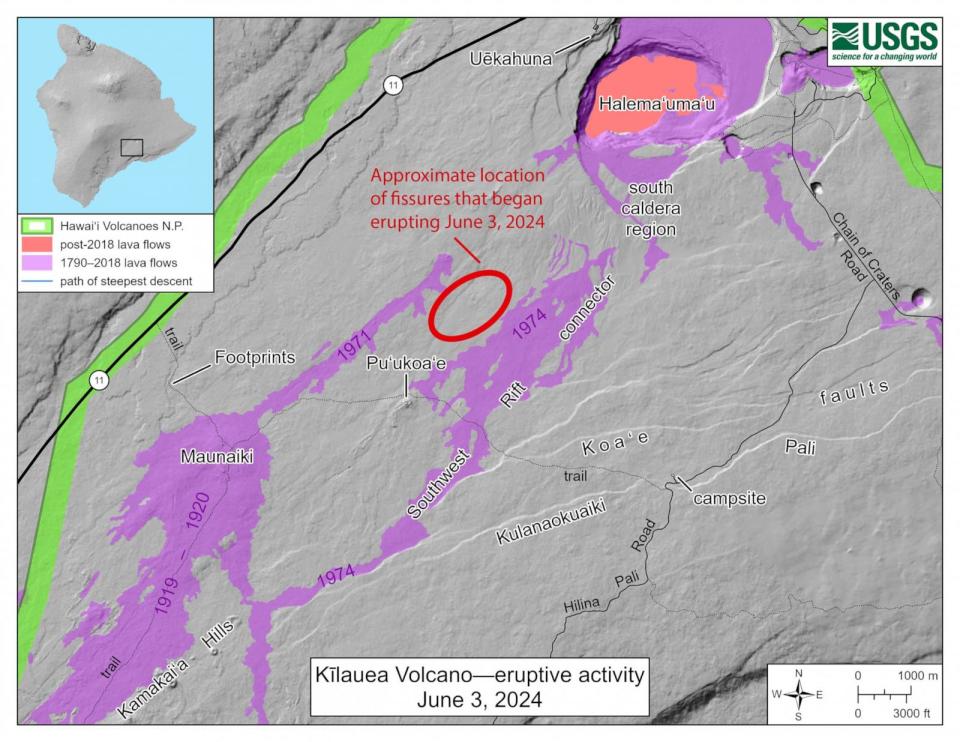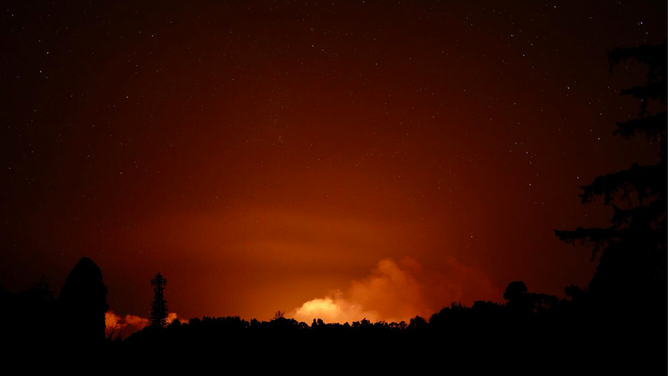
Kilauea Volcano, one of the most active volcanoes in the world located on Hawaii's Big Island, has begun to erupt again. According to multiple sources, including the U.S. Geological Survey (USGS) and Hawaiian Volcano Observatory (HVO), lava began to emerge from the summit of Kilauea around 12:30 a.m. local time on June 3, 2024.
The eruption occurred about a mile south of Kilauea Caldera and north of the Koa'e fault system and Hilina Pali Road within Hawaii Volcanoes National Park (HVNP). Webcam imagery shows a visible glow of red, indicating that lava is currently erupting from fissures.
The USGS raised the alert level to red, which signifies that a volcanic eruption is imminent, underway or suspected. This alert level indicates potential hazardous activity on the ground and in the air.
It's important to note that past eruptions at Kilauea have proven to be destructive. In 2018, heavy lava flow destroyed more than 600 properties as it traveled from the Kilauea summit to the ocean. A mechanism similar to a 'stomp-rocket toy' contributed to the severity of the lava flow that year and could affect future eruptions similarly, according to a paper published last week in Nature Geosciences.
However, recent eruptions have not been as severe. Continual eruptions since 2018 have not caused significant damage. The USGS raises alert levels based on ground-based hazards and aviation safety concerns.
The exact cause of the current eruption is unknown, but scientists warn that there's no way of telling how long this current eruption will last. Seismic activity and ground deformation beneath the East Rift Zone and Southwest Rift Zone remain low, with current volcano activity restricted to the summit region.
The USGS advises people to avoid the area around Kilauea Volcano due to potential hazards from lava flows, volcanic gas emissions, and earthquakes. The Hawaii County Civil Defense Agency also encourages residents and visitors to stay informed about the situation by checking their website or social media channels for updates.
This is a developing story. More information will be provided as it becomes available.








